#alice childress
Text

Like snowflakes, the human pattern is never cast twice. We are uncommonly and marvelously intricate in thought and action, our problems are most complex and, too often, silently borne.
-- Alice Childress
(Verona, Italy)
#humans#intricate#silence#alice childress#travel photography#solitude#stairs#climb#verona#italy#quote
202 notes
·
View notes
Quote
Writing is a labor of love and also an act of defiance, a way to light a candle in a gale wind.
Alice Childress
114 notes
·
View notes
Text
Winners of the 2022 Drama Desk Awards
Winners of the 2022 Drama Desk Awards
Outstanding Play
Cullud Wattah, by Erika Dickerson-Despenza, The Public Theater
English, by Sanaz Toossi, Atlantic Theater Company
Prayer for the French Republic, by Joshua Harmon, Manhattan Theatre Club
Sanctuary City, by Martyna Majok, New York Theatre Workshop
Selling Kabul, by Sylvia Khoury, Playwrights Horizons
The Chinese Lady, by Lloyd Suh, The Public Theater
Outstanding Musical
Harmony,…

View On WordPress
#Abby Mueller#Adrianna Hicks#Alice Childress#Andrea Macasaet#Anna Uzele#Brittney Mack#Joaquina Kalukango#Jocelyn Bioh#Matt Doyle#Patti LuPone#Phylicia Rashad#Samantha Pauly
2 notes
·
View notes
Text
"Life is just a short walk from the cradle to the grave and it sure behooves us to be kind to one another along the way."
Alice Childress, playwright, author, and actor (12th October 1916-1994)
0 notes
Text
Alice Childress: Be kind to one another along the way
“Life is just a short walk from the cradle to the grave and it sure behooves us to be kind to one another along the way.”
—Alice Childress.
View On WordPress
0 notes
Text
A Hero Ain't Nothin' but a Sandwich

Alice Childress's 1973 novel A Hero Ain't Nothin' but a Sandwich goes against the conventional approach of YA literature that emphasizes relatability. Instead, Childress focuses on individualized experiences that are rarely discussed. She accomplishes this by creating humanized characters facing difficult and little-discussed problems that still connect with young adult readers. For example, the novel follows 13-year-old African American Benjie, who struggles with heroin addiction, a topic not often addressed in YA literature.
Through the perspectives of other characters in Benjie's life, readers gain insight into his challenges and come to understand him as more than just an addict. However, the novel faced censorship and was one of eleven books at the center of the 1982 Island Trees School District v. Pico case, which raised First Amendment issues concerning the availability of certain subject matter to children. While acknowledging the need for public schools to monitor potentially harmful material, the Supreme Court emphasized the importance of providing students with a range of viewpoints.
This ruling is particularly relevant to Childress's work because she believed in her writing's ability to represent the underrepresented. Hero highlights the compounding struggles of parental abandonment, racial dynamics, addiction, and poverty. By writing a character who navigates the world at a tumultuous age complicated by their circumstances, Childress creates a novel that appeals to readers who can identify with such experiences, creating an opportunity for readers to engage with difficult conversations about complex topics.
Proving the potency of Hero is writer and magazine editor, Miguel A. Ortiz in the article “The Politics of Poverty in Young Adult Literature”, who argues Childress’s novel accomplishes a tie-in between the issues we see in Benjie’s life. The addiction that Benjie deals with is given depth through the narration of other characters, who use their designated chapters to mention the underlying issues that cause Benjie to rely on heroin in the first place. This technique is as Ortiz states, “allow[ing] for utmost flexibility in portraying the conflicting interest of the several characters”. This depiction humanizes the drug addicted Benjie and gives him the depth to make him a character readers can grow invested in while also showing the broader issue of drug addiction since we see Benjie’s friends and family get realistically frustrated but they still provide necessary narration that keys the reader in to the complexity of an addict, offering room for in-depth discussion where it otherwise wouldn’t be approached. The harm that this causes for the overall conversation is prevalent in the discomfort that propelled the district to take action in the first place since the people who were concerned were likely plagued with their own prejudices about the subject matter that could have been properly combated had books like Hero been more readily available because as Ortiz puts it, "Childress’s novel offers a powerful critique of dominant narratives about drug use and addiction that reduce these complex issues to simplistic moral judgments or stigmatize those who struggle with drug use", which just goes to prove the importance of diverse materials for students who learn about political issues as it relates to literature.
0 notes
Text
Wine In The Wilderness Kicks Off Two River Theater's 2022/2023 Season
Wine in the Wilderness, written by Drama Desk Award winner Alice Childress and directed by Obie Award winner Brandon J. Dirden launches Two River Theater’s 2022/2023 Season on October 15.
Red Bank, NJ – Wine in the Wilderness, written by Drama Desk Award winner Alice Childress and directed by Obie Award winner Brandon J. Dirden launches Two River Theater’s 2022/2023 Season on October 15.
Wine in the Wilderness at Two River Theater
Set in 1964 during the race riots in Harlem, this reflection on how art truly reflects life focuses on artist Bill Jameson and his latest work, three…

View On WordPress
0 notes
Text






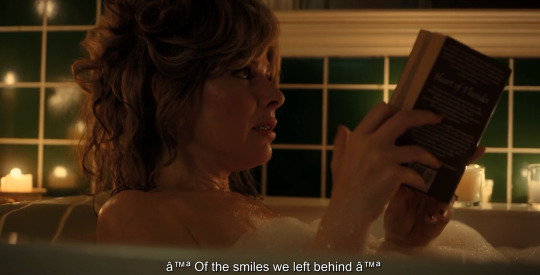

Karen taking a bath + Virginia Creel being associated with taking a bath + a song about memories (birthday gate?) + candles visually associated with Henry & Karen
Honestly all of this is such a big coincidence if Karen is not related to Henry at all
#birthdaygate#karen the lost sister#karen childress#well she's not a creel bc I don't think shes Victor's daughter tbh#karen wheeler#virginia creel#byler#stranger things#henry creel#vecna#this is not about Karen being Alice
32 notes
·
View notes
Text
Oh man. The second the curtain goes down on the first showing of this play, I'm going to be on tumblr, eagerly awaiting ANY crumbs whatsoever.
#hyperfixation station#the first shadow#byler#byler tumblr#henry creel#alice creel#karen childress#truly what the hell is up?#and bob tell us bob stuff too#everything
35 notes
·
View notes
Text
Now that Alice could pass as being older than Henry

Bc I’m sorry this girl ain’t 15 🤣😭

#byler#stranger things#alice creel#henry creel#karen wheeler#karen childress#they give such sibling energy 😭#if that girl is 15 then so is Henry bc they look the exact same age in s4 😭
24 notes
·
View notes
Text
Alvin Childress

Alvin Childress (September 15, 1907 – April 19, 1986) was an American actor, who is best known for playing the cabdriver Amos Jones in the 1950s television comedy series Amos 'n' Andy.
Alvin Childress was born in Meridian, Mississippi. He was educated at Rust College, from which he received a Bachelor of Arts degree in sociology. When he initially entered college, Childress intended to become a doctor, enrolling in typical pre-med courses. He had no thoughts of becoming involved in acting, but became involved in theater outside of classes. Childress and Rex Ingram in the Federal Theatre Project production of Haiti (1938)
Childress's first wife was the former Alice Herndon, who established herself as a successful writer and actress under the name of Alice Childress (1916–1994); the couple was married from 1934 to 1957 and had a daughter, Jean Rosa. From 1961 to 1973, Childress worked as an unemployment interviewer for the Los Angeles Department of Personnel and in the Civil Service Commission of Los Angeles County.
Childress moved to New York City and became an actor with Harlem's Lafayette Players, a troupe of stock players associated with the Lafayette Theatre. Soon, he was engaged as an actor in the Federal Theater Project, the American Negro Theater, and in all-black race film productions such as Keep Punching (1939). His greatest success on the stage was his performance as Noah in the popular drama, Anna Lucasta, which ran for 957 performances. He also worked at Teachers College of Columbia University. Childress also operated his own radio and record store in New York City. When he learned about casting for the Amos 'n' Andy television series, Childress decided to audition for a role. He was hired a year before the show went on the air.
In 1951, he was cast as the level-headed, hard-working and honest Amos Jones in the popular television series, The Amos 'n' Andy Show, which ran for two years on CBS. Childress originally tried out for the role of The Kingfish, but Charles Correll and Freeman Gosden cast him as Amos. Since he had been hired a year before the show began, Gosden and Correll turned the search for an actor to play "The Kingfish" over to Childress. In a 1979 interview, Childress shared information about some of the candidates. Cab Calloway was considered but found wanting by Gosden because of his straight hair. Childress said there were many famous men, with and without actual acting experience, who wanted to play the role. Eventually, old-time vaudeville comedian Tim Moore was cast as the Kingfish.
Shortly after the television show had ended, plans to turn it into a vaudeville act were announced in 1953, with Childress, Williams and Moore playing the same roles as they had in the television series. It is not known if there were any performances. In 1956, after the television show was no longer in production, Childress and some of his fellow cast members: Tim Moore, Spencer Williams, and Lillian Randolph along with her choir, began a tour of the US as "The TV Stars of Amos 'n' Andy". The tour was halted by CBS as the network considered this an infringement of their rights to the program and its cast of characters. Despite the threats which ended the 1956 tour, Childress, along with Moore, Williams and Johnny Lee were able to perform one night in 1957 in Windsor, Ontario, apparently without legal action. When he tried for work as an actor, Childress found none as he was typecast as Amos Jones. For a short time, Childress found himself parking cars for an upscale Beverly Hills restaurant.
Childress also appeared in roles on the television series Perry Mason, Sanford and Son, Good Times and The Jeffersons and in the films Thunderbolt and Lightfoot (1974) and The Day of the Locust (1975). When Childress appeared as a minister in a 1972 episode of Sanford and Son, he was reunited with two former cast members: Lillian Randolph of Amos 'n' Andy in the role of Aunt Hazel and Lance Taylor, Jr. of Anna Lucasta, with the role of Uncle Edgar.
Childress suffered from diabetes and other ailments. He died at age 78 on April 19, 1986, in Inglewood, California. He was buried at National Memorial Harmony Park in Landover, Maryland.
21 notes
·
View notes
Text
The First Shadow, Timelines, Alice Creel, and Swapping Family Members: New Thoughts On Alice Creel vs Karen Wheeler Regarding the Edward Timeline
(Karen Wheeler Might Be Alice, Just Not In The Way Anyone (Including Me) Thought She Was)
So, to start this off on an insane foot (bear with me).
I think that this is Alice Creel:
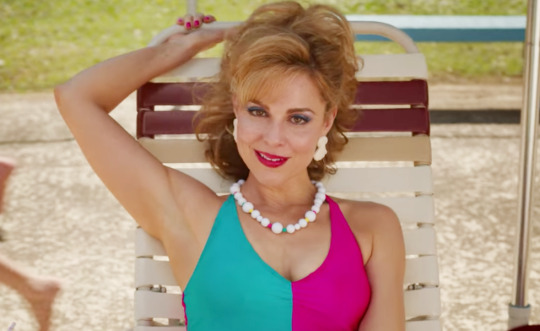
But before you go “oh, Em, you’re just rehashing an old Alice theory, everyone knows this theory”- I DON’T think that this is Alice Creel:
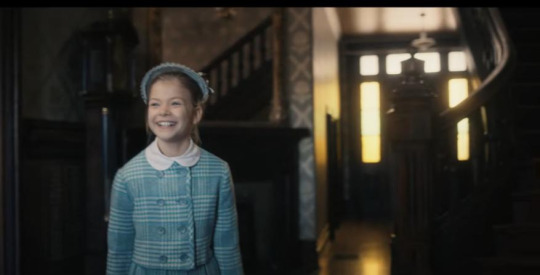
I a.) don’t think that they’re the same person and b.) I don’t think that the second girl is actually Alice Creel.
Most Alice is Karen theories claim that these two are the same person, and that Karen uses contact lenses or something to have brown eyes, something that I disagreed with.
And I thought that Karen was actually Daughter Virginia until today, and that that little blonde girl was Alice, and that they’re two separate people. I talked about it posts such as this post. Now, I'm not letting go of that theory entirely, I think there's still a chance that it might be true, especially since some of the TFS stuff is still being revealed/might be changed regarding contacts etc etc.
But now, I offer a new idea: that little blonde girl is not Alice Creel.
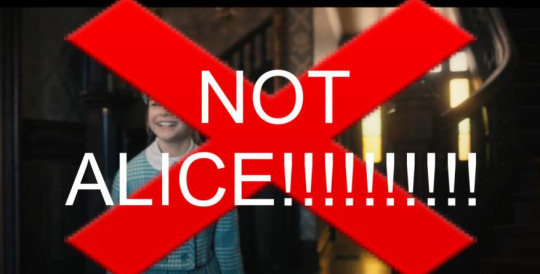
She’s also probably not Karen Wheeler either (at least, not the brown-eyed karen that we see in the show. I'm still undecided about the blue-eyed karen childress in all of this)
I think that little blonde girl is Virginia Creel/Daughter Virginia, and that Karen Wheeler IS Alice Creel, but is NOT that little blonde girl that we see. I don't think we've ever seen Henry's sister, Alice Creel, as a child on-screen.
Now, setting that aside, let’s start at the beginning of what I think is going on here, and we’ll circle back to that, and I'll explain why I think this is the case, and why I also believe that the brown-eyed "Virginia" Creel that we see is actually Mother Alice.
SECTION 1: Did Victor Get Peter'd? What The Hell Happened to Victor Creel?
So, I'm wondering if one of these is true:
A.) The Victor in Pennhurst is actually the Edward Timeline Victor, who has been brought into the Henry timeline.
BUT, he's had his memories messed with by the lab and believes himself to be the Henry Timeline Victor (the father of Henry and Alice and the husband of Virginia) but is actually the father of Edward and Virginia and the husband of Alice)/.
They likely left the visual part of his memories alone, but messed with the name part of his brain
OR
B.) The Victor in Pennhurst is the Henry Timeline Victor (the father of Henry and Alice and the husband of Virginia), and never crossed timelines, BUT he's had his memories messed with by the lab.
He doesn't believe himself to be the Edward Timeline Victor the way that the previous Edward Timeline Victor in option A.) believes himself to be the Henry Timeline Victor, BUT he DOES believe that the people he's seeing in his memories are his family when they're not.
This would be because they messed with the visual part of his memories, but left the names alone. And therefore, his actual daughter IS named "Alice," but the little girl in the visuals/his memories is NOT Alice Creel, and instead, is Edward Timeline Daughter Virginia Creel.
Either way, I think his memories got messed with, and either way, both options lead to that little blonde girl not being Alice Creel.
Let's go through option A.) first.
This would be the option where Victor got "Peter'd"- aka, being pulled into another timeline like Peter Bishop was in Fringe (and Fringe is confirmed inspo for ST, the ST writers have tweeted about watching it). You can also see this post for more proof of that.
In Fringe, it's the son (Peter), who is taken to another timeline. But, if ST wanted to subvert this/flip it, as they often do with their sources of inspiration, then it would make sense for the father (Victor) to be the one who is taken to another timeline. We'll talk about Fringe more later, though.
And you might be thinking "didn't Victor straight up say that Henry was his boy, Alice was his daughter, and then said "Virginia" in reference to his wife? Doesn't that imply that he's Henry Timeline Victor?
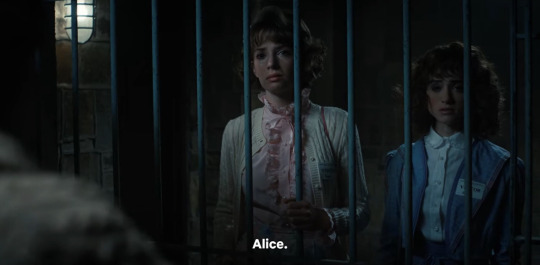
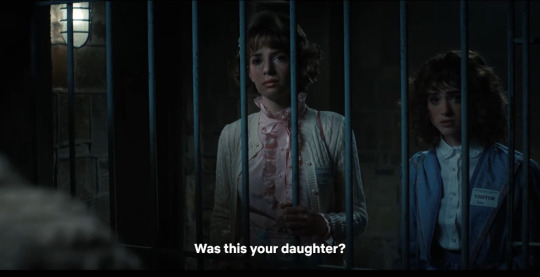
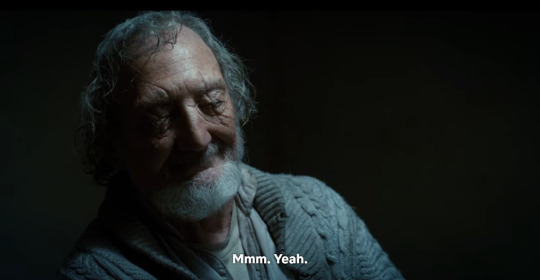

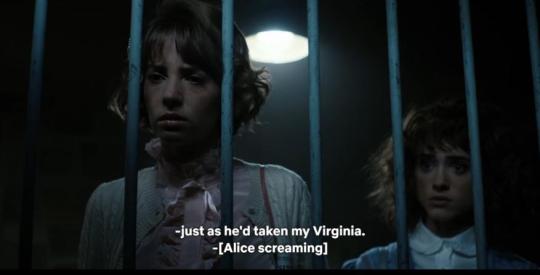
And YES, he did, but, like I said earlier, if the names were swapped around for him/if he believes that he's Henry Timeline Victor, then it tracks perfectly for him to believe that those are the names of his children and the name of his wife, even if they're not. His memories would still be the same visually, he would still be picturing His Kids in his mind, he would just have their names wrong/believe them to be someone they're not (much like Hopper talking about the "wrong kid," back in S1).
And I'm also wondering if The First Shadow is going to be the first time that we see Henry Creel and his family, rather than Edward Creel and his family.
Why am I wondering if TFS is going to be the first time that we actually see Henry Creel's family/see Henry Timeline Victor? Well, it's partially because, like I talked about here, Mike Jibson, who's going to be playing Victor in The First Shadow, resembles Owens WAY more than he resembles Kevin L Johnson/the guy who plays Young Victor.
So, I'm wondering if this guy/Pennhurst Victor:
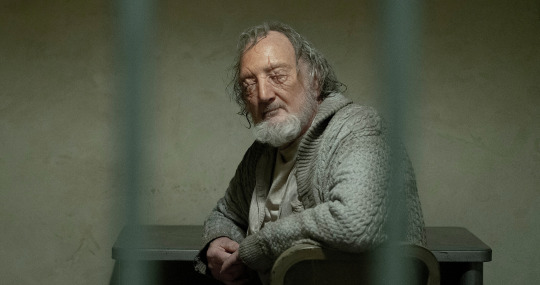
IS this guy and IS Edward's father:

But is NOT this guy/is not actually Henry Creel's father:

But that This Guy is Henry's father, and possibly a young Owens/if we're seeing Henry's Creel's Father In The 50s for the first time & if Kevin L Johnson solely played Edward's father:

I know that previously, I said that Owens might be Edward Timeline Victor, but NOW, I'm wondering if he's Henry Timeline Victor, an idea I'll come back to soon in this section when I talk about WHY Victor might have been pulled from the Edward Timeline to the Henry Timeline.
And regarding the idea of us not having seen Henry's family before, there's also the matter of the wallpaper. I talked about the colour-changing wallpaper in the Creel house and how it connects to multiple timelines in this post, however, I want to talk about it again, because I want to talk about what we DON'T see in this regard, rather than what we DO see.
And what we DON'T see is the red wallpaper in the family room in any of the 1950s flashbacks. This is relevant because as I talked about in that post, the red wallpaper seems to be from the Creel house in the Henry timeline, whereas the green wallpaper seems to be from the Creel house in the Edward timeline- and the green wallpaper is the only wallpaper that we see in that room in any of the 1950s flashbacks.
This would mean that we're only seeing the Edward timeline when we're seeing 1950s flashbacks.
However, it's also hard to tell/hard to say Definitively if we're only seeing the Edward timeline because in many of the flashback scenes, the door to that room is shut/simple not visible, so we COULD be seeing shots of the red wallpaper Creel house/of the Henry timeline, but we would have no idea because we can't see that room.
BUT, if we ARE seeing solely the Edward timeline in those 50s, scenes, then it would track with the little blonde girl NOT being Daughter Alice/Alice Creel, because Daughter Alice doesn't exist in the Edward timeline- but Daughter Virginia does, and therefore, that little blonde girl is actually Virginia Creel. It would also mean that the mother "Virginia" Creel is actually Alice Creel/Mother Alice.
This would explain why Virginia Creel in TFS has blue eyes whereas Victor's "virginia" in his pennhurst sequence has brown eyes but is never referred to as Virginia by name in the 50s (it only happens when Victor says her name in pennhurst but that tracks with him having his brain messed with)- because she's not Virginia.
It would also explain why in the Dear Billy script, it has Virginia and Alice's names swapped in that moving-in scene: because that's exactly what it would have been for Edward Timeline Victor. He would have been standing beside his wife, Alice, which is what's birefly in the script (the line where they put thier arm around eachother):
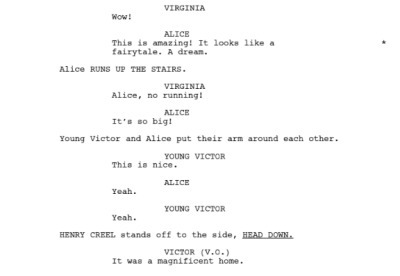
And now here's the big question: WHY?
WHY bring Edward Timeline Victor into Henry's timeline???
WELL! I mentioned the idea of Owens being Henry Timeline Victor. And I think that's exactly WHY the lab might pull Edward Timeline Victor into the Henry Timeline.
I've talked repeatedly about how it's extremely likely that a.) the lab was involved with the Creel murders/present on the night of the murders but also b.) the lab was setting up the murders/planning things right from the day that the Creels stepped foot into Hawkins.
And we know that the Creel Murders in Edward's timeline happened a few days before the Creel Murders in Henry's timeline. So, if the lab was basically using Edward's timeline as a test run for pulling off the Creel murders in Henry's timeline, but if Henry Timeline Victor is Owens, then they need a fall guy to take the blame for the murders.
Because let's say that Jibson and Owens are the same guy, and that that Jibson-Owens is Henry's father from the Henry timeline.
But if Owens is the father, and if the lab needs to pull off the Creel murders in henry's timeline too (after all, they happened in edward's timeline FIRST/a few days BEFORE they happened in henry's timeline it's lowkey giving inter-timeline lab fuckery and a trial run), then who takes the blame???? After all, in Edward's timeline, Victor got arrested and then was dumped on the side of the road and taken in for questioning and sentenced, but we don't hear anything about what happens to Edward Timeline victor after his sentencing. He could have killed himself in prison, he could have escaped etc etc.
He could have dyed his hair pink with smuggled dye for all we know, point is, we don't have a damn clue at ALL what happened to edward timeline victor after his trial/after being sentenced to pennhurst. I'm not saying that he actually killed himself or escaped, but i AM saying that if the lab was to grab edward-timeline victor and bring him over to henry's timeline, we, as the audience, would have no idea based on the papers because the papers don't tell us what happened to him. We hear nothing whatsoever about Edward Timeline victor creeel after his sentence.
The weekly watcher is different because it gives us an INTERVIEW with pennhurst victor while he's in pennhurst, after his trial, indicating that in the Henry timeline, there is, in fact, a Victor in prison in pennhurst. But the Edward timeline doesn't have this, the indianapolis gazette article solely focuses on the day of Victor’s trial, we don't get anything about any interviews later on.
TLDRif jibson and owens are the same guy/are henry's father, and Kevin is Pennhurst Victor but from the Edward timeline, brought over into the Henry timeline. And would still track with what I said about how we dont see that red wallpaper room in the 50s/if that red wallpaper indicates henry timeline & we arent seeing it during the 50s, then that implies that we arent seeing the Henry timeline in the 50s.
But why would Owens want to kill his own family? Well, he didn't. Going back to Fringe, James talked about the fact that the lab in Fringe staged a murder to try and activate Olivia's powers as a child- and while this may have also been done in HNL with El in 1979/during NINA, I'm also wondering if that's what happened with Henward and if the lab was trying to activate their powers.
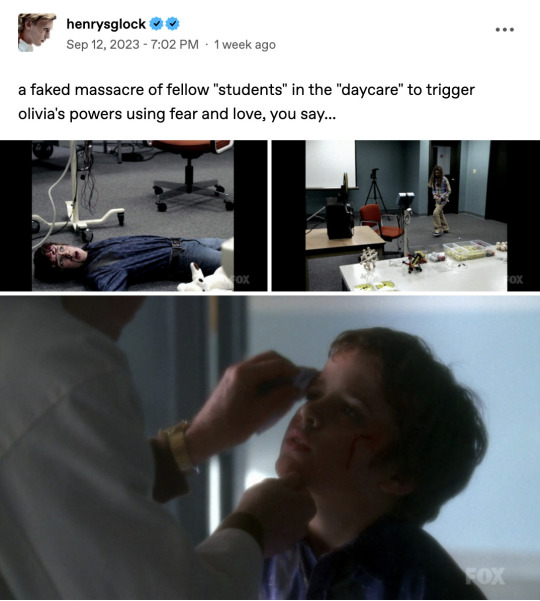
But if they're staging the murders, and if they want things to be believable, they want the public to think that the Creels are dead, then they need somebody to take the blame- and it can't be Owens/Henry Timeline Victor, because he's researching/part of the project. So, who do you grab? You grab his almost-clone, his alternate timeline self to take the blame.
This would, weirdly enough, also make Owens the father of Karen Wheeler, as if Owens if Henry Timeline Victor. It would also mean that Alice Creel didn't die (but Daughter Virginia did/that blue eyed girl we saw bleeding on the ground) did die, and that Virginia Creel (the blue eyed TFS lady) didn't die either. Which, she may have gone on to become Connie Frazier, but that's another matter entirely.
However, I'm not fully convinced that Owens is any form of alternate timeline Victor, so just keep in mind that I'm not saying any of this as if it's going to be firm fact. A solid chunk of this is just me swishing thoughts around and speculating.
And with that bit of doubt regarding option A in mind:
Let's now go through option B.)
Options B does not involve Owens being an alternate timeline Victor, nor does it involve Victor crossing timelines at all.
As mentioned earlier, Option B involves Victor remembering the names of his family, but the visuals being messed with/the names being associated with the wrong people.
How would those visuals be transferred? Well, from the other Victor's memories.
And going back to Fringe briefly, it may seem like a stretch for Victor to have somebody else's memories, but keeping in mind that Fringe is confirmed inspiration for ST, in Fringe, one person's memories are transferred into another person's mind REPEATEDLY, often against their will, and often without them even realizing it. Olivia, for example, has memories that belong to Fauxlivia (her alternate timeline counterpart's nickname) implanted into her brain by a Brenner-Owens paralleled scientist to try and convince her that she's actually Fauxlivia (and it WORKS for awhile/absolutely had the potential to work permanently). It's abslutely within the realm of possibility for the lab to have done this to Victor.
And continuing on with Fringe, Victor is EXTREMELY paralleled to Walter Bishop (like, the shot of Victor turning around in Pennhurst is taken basically frame for frame of Walter turning around in St Claire's mental institution), and Walter Bishop had part of his brain removed, and lost a bunch of memories, especially memories of of his now-dead son's childhood as a result.
And it's also worth noting that Walter is Peter's father- however, Walter's original Peter died, and Walter pulled the Peter from another timeline into his timeline instead. But the memories that Walter lost of his son's childhood were of his original Peter's childhood- he didn't lose ALL of those memories, but he lost quite a few. Which has me staring at Henry vs Edward and Pennhurst Victor losing his memories of Henry & having memories of Edward instead, not even realizing that they're memories of Edward.
Long story short, either way, whether it's Option A or Option B, or something else entirely, it's EXTREMELY EXTREMELY likely that Victor had his memories messed with, because like I talked about in this post, the Indianapolis Gazette talks about Victor not remembering anything from the night of the murders, and being picked up on the side of the road.
And, like I talked about in this post, Victor and El's arrests are paralleled- and who was El later taken by as a result of being arrested? THE LAB!!!
And also, like I talked about in this post, Victor's flashback scenes have multiple direct NINA paralells- which would make sense if the lab was messing with Victor's memories the same way they messed with El's memories via NINA.
So, there's substantial evidence to support the idea that Victor's memories aren't reliable, and likely have been intentionally scrambled/messed with.
SECTION 2: Back To Alice
So, circling back to Alice, let's go through why I think that this little blonde girl:

Is NOT Alice Creel. And later on, I'm also going to tie this to why Alice Creel is missing from The First Shadow.
You might be thinking “oh, Em, you’re so neck deep in insane theories that you forgot to actually look at the show! They call that little blonde girl “Alice” TWICE! You fool! You buffoon! I banish thee to The Beyond for One Trillion Years for your ignorance and tomfoolery!”
However, as indicated by my lovingly labelled screenshots of those exact scenes, I did NOT forget, and thankfully, do not need to be banished to The Beyond:
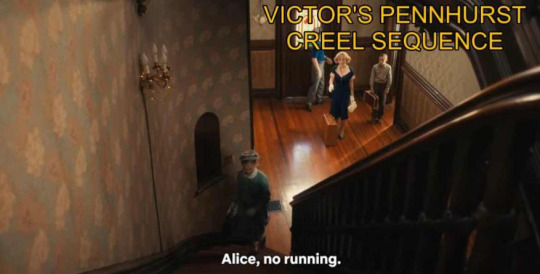
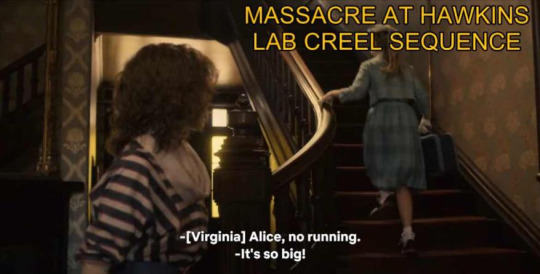
And interestingly enough, even though in those two versions of the Creels' moving-in-day scene have Alice being referred to by name, there is one version that doesn't- the Creel Family Trailer:

And what's especially interesting abou those two versions of that scene where "Alice" is referred to by name is that they're both intentionally set up as being unreliable.
They CHOSE to a.) have Victor seemignly be missing chunks of his memory (for example, he completely leaves out things like the exorcism at the Creel house and a ton of other details that are present in the papers)/be unreliable due to very, very likely having had his brain/messed with by the lab and they also chose to b.) have Nancy be in Vecna's memories, which, again, unreliable due to the HUGE chance of the lab fucking with them. Hell, in his monologue, 001 doesn't even give us the name of his mother or his sister- he seems to forget his sister even existed until the end of his monologue, and even THEN, he still doesn't give us her name! And he also directly contradicts himself when talking about how it was "planned" vs having JUST talked about how it was spur of the moment earlier, like I talked about in this post. He's not reliable, and neither is Victor.
They could've just given us a scene of that girl being called "Alice" that wasn't through the memories of somebody unreliable who's very very likely had their brain messed with in a million different ways by the lab. But they didn't.
The Creel Family Trailer is the only version that isn't set up as being somebody's memories- and especially not the memories of someone who's been messed with by the lab, and it's also the only version where "Alice's" name isn't used/the only version where that little blonde, blue-eyed girl isn't referred to as Alice.
Is it not a little suspicious that the most reliable version of these events (the Creel family trailer) is also the version where, conveniently, that girl isn't referred to as Alice?
And I wondered, initially, if this was to conceal Alice's identity/name in the trailer. However, when I dug into it, that doesn't make any sense for these key reasons.
1.) Alice's name had already been revealed in the Netflix Tudum Creel Newspaper trailer. Alice's name was not a secret when the Creel Family Trailer came out. Why conceal her name AFTER having shown it right on-screen?
2.) The name isnt the only change in these scenes. I've talked about this before, but the trailer has quite a few differences from the scenes in the show, especially with the scene of Alice finding the dead rabbit being COMPLETELY different.
But focusing on that "coming in the door," scene SPECIFICALLY, there's multiple differences.
The light fixture is missing in the trailer:

But it's there in both the Dear Billly Creel sequence and the Massacre at HNL sequence:
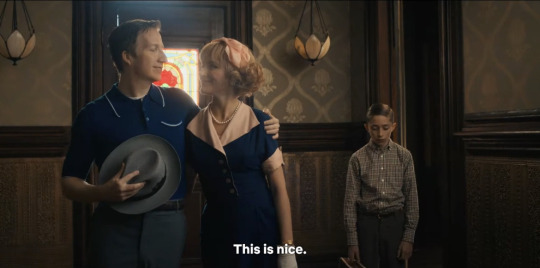
"Henry" zooms into the house and runs up the stairs immediately instead of standing there all sad:
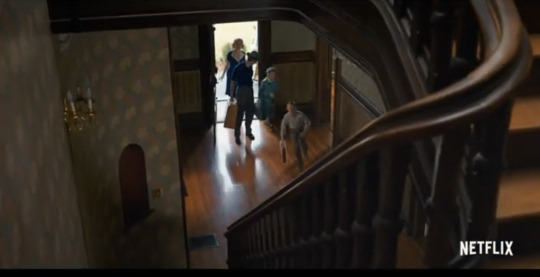
"Henry" runs in FIRST, before "Alice", whereas in the show, "Alice" gets into the house before "Henry":

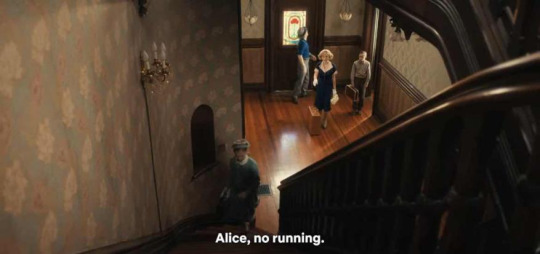
"Virginia's" line is rewritten- if they simply wanted to conceal Alice's identity, it would have been VERY easy to take the in-show scene, put it in the trailer, and edit Virginia's dialogue to just say "No running," instead of "Alice, no running". But instead, they rewrote the line to say "children, no running":


So, if this was just a case of concealing Alice's identity/name (a name they'd already revealed, no less), why change SO many core parts of the scene (such as "Henry" zooming inside instead of standing at the door), and why rewrite "Virginia's" line? Why not just literally remove the word "Alice" from her line? LIke, it would have been a million times easier. I could do a quick job of it in capcut on my phone! It would take SUCH a small amount of time for them to do compared to all of the weird changes they made for the trailer & instead of recording a whole new line of dialogue for "Virginia".
And speaking of "Virginia," I mentioned this earlier, but I don't think that's Virginia Creel at all. I think that's Mother Alice Creel, from the Edward timeline.
Let's look at the papers- specifically, the Weekly Watcher. The Weekly Watcher says that Alice Creel is 15 years old:

But this girl, clearly, is not 15:

And Virginia Creel's daughter, Alice Creel, should be 15 years old. But if that little blue-eyed girl is not 15, then she's not Virginia Creel's daughter. Which makes sense if she's Alice Creel's daughter, Daughter Virginia, and if the brown-eyed mother in those scenes is actually Mother Alice Creel.
Like, setting aside production error allegations because I'm not dealing with those anymore, how can "this little girl who is Not 15 is Alice Creel" and "Alice Creel is 15" coexist? Frankly, I actually think there's more evidence to support the fact that the memories/scenes of that little girl being called "Alice," are unreliable than there is to debunk the newspaper saying that Alice was 15.
Why Is Alice Creel Missing From TFS?
If Karen Childress is NOT a Creel in the henry timeline/in TFS, but has blue eyes and is NOT the karen wheeler that we see in the show, as that karen has brown eyes/does NOT go on to become That Karen Wheeler Who Is Mike Wheeler's Mother
And if Daughter Virginia Creel is the blue-eyed little girl that we see in the show, and who Might be karen childress in some way.
And if Daughter Alice Creel is a.) supposed to be 15 in 1959 and b.) mysteriously missing from TFS but is also the brown-eyed Karen Wheeler that we see in the show.
Then, it might explain why Alice is missing in The First Shadow- we're seeing the backstory for another Karen Wheeler/Karen Childress ( whose actress has blue eyes and is likely NOT the Karen we see in the show), and we're also missing an Alice who later goes on to BECOME Brown Eyed Karen- which, Karen Childress and Alice Creel being together in the same timeline causes issues because if Alice Creel actually has brown eyes and goes on to become Karen Wheeler, then WHY THE HELL is she in the same timeline as the other Karen/the blue-eyed Karen??
That would be TWO KARENS IN THE SAME TIMELINE, which might explain why Alice Creel isnt there/might be tied to it. I don't know fully how it works, yet, but we don't really know the ramifications of the same person from two different timelines ending up in the same timeline together.
So, if Karen Childress/Blue Eyed Karen somehow got into Alice Creel/Brown Eyed Karen's timeline, then there's a chance that Brown Eyed Karen/Alice Crel was removed from her original timeline, and is therefore now absent from TFS- she's likely still alive, as we see Brown Eyed Karen in the show, but that would still work completely if she simply ended up in another timeline/if Brown Eyed Karen/Alice Creel vanished from the Henry Timeline because Blue Eyed Karen/Karen Childress ended up in that timeline instead.
And bringing up Fringe AGAIN, in Fringe, when one person or item is taken to another timeline, something of an equivalent mass must be swapped to the other timeline (like the Indiana Jones sandbag thing- with exceptions to this rule being limited to people with Specific Powers, such as Main Timeline Olivia), and this DOES include people.
So, if Karen Childress/Blue Eyed Karen was chilld in a timeline that isn't the TFS timeline, and suddenly got pulled into the TFS timeline, and if Brown Eyed Karen/Alice Creel was the same mass (which makeas sense if they're timeline counterparts of eachother) as her, Brown Eyed Karen/Alice Creel would be pulled into the non-TFS timeline at the same time as when Blue Eyed Karen was pulled into the TFS timeline.
Hell, there doesn't even have to be a reason for this happening/it doesn't even have to be the lab planning it! Because in Fringe, things end up pulled into another timeline/swapped simply because of the bridge/dam/veil/wall between timelines getting thinner and the swap happening accidentally.
If the blue-eyed Karen Childress is NOT a Creel, and was born outside of the Creel family and coexisted alongside Daughter Virginia in the same timeline originally (before getting yoinked to another timeline), then we have three girls (as mentioned earlier)- Karen Childress, Daughter Alice Creel, and Daughter Virgniia Creel
And if Karen Childress was from Timeline A (Edward Timeline)
And if Daughter Alice Creel was from Timeline B (Henry Timeline/TFS Timeline)
And if Daughter Virginia Creel is also from Timeline A (Edward Timeline)
And if Karen Childress got pulled into Timeline B (Henry Timeline), and Daughter Alice Creel got pulled into Timeline A (Edward Timeline), that would mean that Daughter Alice Creel and Daughter Virginia Creel are co-existing in the same timeline (The Edward Timeline). Which would explain why Brown Eyed Karen/the Karen we know in the show is just chilling and living her life
I'll come back to this later, but Brown Eyed Karen/Alice Creel may very well have simply adopted the life of Karen Childress in the Edward Timeline, while Alice Creel stayed missing in the Henry Timeline/Karen Childress was present instead, but Karen Childress chose to keep using her original name, whereas Alice/Brown Eyed Karen adopted the name and life of Karen Childress in the other timeline.
After all, Daugher Alice Creel doesn't exist in the Edward Timeline, and because Daughter Virginia Creel would've still been present in the Edward Timeline, Daughter Alice Creel/Brown Eyed Karen couldn't simply pick up her life, and instead, resumed the life of Karen Childress. And it's hard to figure out what Karen Childress may have done in her new timeline/if she had a family/if her parents were present in this timeline or WHAT, but a lot of this section is just Me Speculating And Trying To Figure Things Out.
However, things also get tricky here, because if Alice Creel/Brown Eyed Karen never returned to her original timeline, then why does the Weekly Watcher report on her death?
However, even witih all my theorizing aside, this is an issue that remains even simply with the fact that Alice doesn't seem to be present in TFS- so if she's not around for the murders, how did she die/why are papers reporting about her death? I think there's room there for lab fuckery faking things/covering things up etc etc, but it's still something to chew on.
(and there's ALSO the chance of more than 2 timelines which throws a whole NEW wrench into things)
And you might also be wondering "well, though, how is Daugher Alice Creel Karen Childress' timeline counterpart? Shouldn't Daughter Virginia Creel be Daughter Alice's timeline counterpart?
To which I say: no! Not necessariily.
There's a LOT of weirdness here, but it's worth noting that ST has chosen a very interesting way to go about the timeline counterpart business, because there's quite a bit of variation.
For example, Victor Creel's name stays the same in both the Henry timeline and the Edward timeline AND his position in the family stays the same (the father/husband), but he's younger by 5 years in the Edward timeline compared to the Henry timeline.
Edward and Henry's position in the family (son/brother) stays the same, but his name changes to something entirely new, and we don't know Edward's age, so we don't know if that changes.
Virginia Creel and Alice Creel are where things get REALLY messy, because they swap names and positions in the family depending on the timeline. Instead of just keeping the same name and position the way that Victor does, OR getting a totally brand new, not used in the family before name but keeping the same position in the family the way that Henry and Edward do, Virginia and Alice instead, swap names and positions in the family with eachother.
Virginia Creel is Victor's wife and Henry and Alice's mother in the Henry timeline.
However, Virginia Creel is Victor's daughter and Edward's sister and Alice's daughter in the Edward timeline.
Alice Creel is Victor's daughter and Henry's sister in the Henry Timeline.
However, Alice Creel is Victor's wife and Edward and Virginia's mother in the Edward timeline.
And also, in Fringe, timeline counterparts are often messy too/not exactly equal/not always born at the same time- for example Henry Bishop was born and didn't have a timeline counterpart at ALL because there's only one version of his father (Peter Bishop), as the other timeline Peter died as a child. But then Henry Bishop is later erased from the timeline and Peter has a child named Henrietta (born in the opposite timeline from Henry/is Olivia's daughter born in the main timeline rather than Henry who was Fauxlivia's son born in the alternate timeline), but again, because there is only ONE Peter, he fathered both of them and then Henry ceased to exist, and it's all complicated etc.
So, point is, timeline counterpart stuff is not cut and dry or particularly simple or easy here. Which means that there's absolutely stilll room for a.) certain people not HAVING co-existing timeline counterparts the way that Henry and Henrietta don't actually have one because in order for Henrietta to exist, Henry can't exist, and vice versa because there's only one Peter and b.) timeline counterparts just generally being weird/ Karen Childress being Alice Creel's timeline counterpart.
The idea of Brown Eyed Karen/Alice Creel swapping timeline with Karen Childress/wondering why Karen Childress and Alice Creel were timeline counterparts/got swapped instead of Daughter Virginia and Daugher Alice would also tie into Daugher Alice Creel being listed as 15 years old in 1959 in the Weekly Watcher- if Alice Creel was 15 years old but Daugher Virginia (the blonde little girl we see in the show that we think is Alice) is CLEARLY not 15, they're not going to have equal mass- but Karen Childress, could totally be 15, hence why those two would be more likely to swap that Daughter Virginia and Daughter Alice, as Daughter Virginia and Daughter Alice seem to be two different ages/that little blonde girl is not 15, but Karen Childress and Daugher Alice/Bornw Eyed Karen could definitely have both been 15 and therefore far closer to being the same mass.
And also, if Alice Creel/Brown Eyed Karen simply adopted the name and life of Karen Childress after their timelines got swapped (and possibly even gained Karen's memories over time, which as mentioned before, happens in Fringe), then Brown Eyed Karen Wheeler may very well, at this point, believe herself to have always been Karen Childress. As mentioned before, somebody believing themselves to be their alternate timeline counterpart after swapping timelines HAS happened in Fringe.
This may also be why Ted and Karen's relationship is so unhappy- Brown Eyed Karen isn't the Karen that Ted originally knew. And this Ted isn't the Ted that Brown Eyed Karen originally knew. And Ted might know deep down that something isn't right (again, this happens in Fringe with people whose loved ones get timeline swapped. Sometimes they notice, sometimes they dont, sometimes they say something about it, sometimes they don't.)
Anyway! Lots to think about.
SECTION 3: THE CONNIE PROBLEM
So, this all also leaves us with the question of Connie, though. Why does she have so much Alice Creel coding? Like, the name alice plays on screen twice with her & her body's posed the same way as alice's dead body.
However, I made that post about how TFS blue eyed Virginia resembles Connie. And we don't know what happens to that blue eyed virginia, we only saw a brown eyed "virginia" die. And that blonde little girl with blue eyes is presented to us as being alice creel, but a.) alice creel should be 15 and b.) the whole thing w her name being removed from the trailer.
And so im like. Connie. Are you blue-eyed TFS virginia a few years down the line? Which would be weird if that tfs mother is virginia and not alice, but there's so much name swap fuckery that the association with the name alice could still fit somehow/I just need to dig more. Anyway, things are making me insane as usual.
SECTION 4: CONCLUSION
My conclusion summed up?

And before you come into my inbox calling me insane, please know that a.) I know and I'm having fun and b.) lots of this is speculation. There's parts with firmer evidence, and there's parts with less firm evidence/parts where I'm just trying to fill in the gaps.
My main point is that it doesn't make any damn sense for that little blonde girl to be Alice Creel if Alice Creel is supposed to be 15, and ALSO that there's plausible evidence (such as the trailer removing her name) that she isn't Alice Creel, and that her not being Alice Creel may explain why Alice Creel is missing from TFS. This post is less evidence-focused than most of my posts because a.) so much is still up in the air with TFS and b.) I am very very tired today LMAO, but there's still some solid chunks of evidence in here that I think are worth considering.
#stranger things#alice creel#edward creel#timeline theory#henry creel#st creel timeline weirdness#karen wheeler#the creelers
36 notes
·
View notes
Text
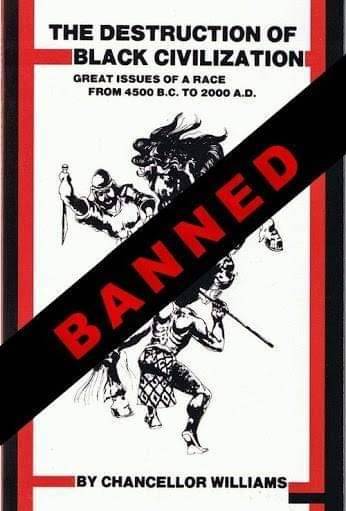
The Destruction of Black Civilization and The Origin of African Civilization by Chancellor Williams were challenged at the Prince George County high school libraries in 1993 because the two volumes were said to promote “racism against white people.” In a complaint filed with the state, the works were called “racist pornography” written “to provoke emotions and actions of racial prejudice, bias, hatred, and hostility towards citizens and students in Maryland.”
A widely read history of Africans well researched analysis details the development of civilization in Africa. Now ask yourself, what information is contained in this they really did not want you to know? And do you know it?
Challenged and Banned Books by and about African Americans
Young and Black In America by Rae Pace Alexander
1983—After the Minnesota Civil Liberties Union sued the Elk River School Board, the Board reversed its decision to restrict the title to students who have written permission from their parents. (MN)
And the Walls Came Tumbling Down by Ralph D. Abernathy
1989—Burned protest in Denver because it alleges that Martin Luther King, Jr. was involved with three women. E. Napoleon Walton, the publisher of the Denver Cosmopolitan Advertiser, stated, “[Abernathy] has his freedom of speech, and we have our freedom to burn it.” (CO)
And Still I Rise by Maya Angelou
1982—Challenged at the Northside High School in Lafayette, Louisiana. (LA)
1987—Challenged at the Longview school system in Washington because some “students could be harmed by its graphic language.” (WA)
I Know Why the Caged Bird Sings by Maya Angelou
1983 – 2009—Over thirty-five challenges in twenty states since the book’s publication.
2009—Challenged in the Newman-Crows Landing School District on a required reading list presented by the Orestimba High English Department. A trustee questioned the qualifications of Orestimba staff to teach a novel depicting African American culture. (CA)
Another Country by James Baldwin
1963—Considered obscene, the book was banned from the New Orleans Public library. After a year of litigation, it was restored. (LA)
Blues for Mister Charlie by James Baldwin
1980—Challenged in Sioux Falls, South Dakota because it’s “pornographic,” and it “tears down Christian principles.” (SD).
Go Tell It on the Mountain by James Baldwin
1994—Challenged as required reading in the Hudson Falls Schools because the books has recurring themes of rape, masturbation, violence, and degrading treatment of women. (NY)
1998—Challenged as a ninth-grade summer reading option in Prince William County because the book “was rife with profanity and explicit sex.” (VA)
If Beale Street Could Talk by James Baldwin
1989—Removed from the St. Paul High School Library because the book contains obscene language and explicit descriptions of sexual activity. (OR)
Tell Me How Long the Train’s Been Gone by James Baldwin
1983—Four members of the Alabama State Textbook Committee called for its rejection because Baldwin’s work preaches “bitterness and hatred against whites.” (AL)
The Toilet by Amiri Baraka
1969—Expurgated at Eastern High School to eliminate “four-letter words or vernacular.”
Manchild in the Promised Land by Claude Brown
1974 – 1987—Challenged five times in four states. (WI, FL, LA, OH, OR)
1987—Challenged at the Parkrose High School because the content is “violent, the language offensive, and women are degraded.” The protestors also questioned its relevance, claiming that Parkrose students have no need to understand life in a black ghetto. (OR)
A Hero Ain’t Nothin But a Sandwich by Alice Childress
1976 – 1994—Challenged five times in five states. (NY, GA, TX, MD, SC)
1976—Removed from Island Trees School Union Free District High School library along with nine other titles because they were considered “immoral, anti-American, anti-Christian, or just plain filthy.” (NY)
Rainbow Jordan by Alice Childress
1986—Challenged at the Gwinnett County public schools because of “foul language and sexual references.” (GA)
1986—Banned from Spokane middle schools because the book’s storyline about a prostitute’s daughter was “too mature.” (WA)
Soul on Ice by Eldridge Cleaver
1969 -1979—Challenged five times in four states. (CA, CT, NY, WA)
1975—Challenged at the Greenwich High School library because the book is “crime provoking and anti-American as well as obscene and pornographic.” (CT)
Invisible Man by Ralph Ellison
1994—Retained in the Yakima schools after a five-month dispute over what advanced high school students should read in the classroom. Two parents raised concerns about profanity and images of violence and sexuality in the book and requested that it be removed from the reading list. (WA)
2013—North Carolina school board considers banning the book after the mother of an 11-grader complained, claiming Ellison’s work was inappropriate for 11th grade summer reading, citing both language and subject matter.
The Autobiography of Miss Jane Pittman by Ernest J. Gaines
2006—Challenged as an eighth-grade district-wide reading assignment in the Puyallup schools because “racial slurs and stereotyping are used throughout the book, as well as scenes of sex, rape, and implied incest.”
A Lesson Before Dying by Ernest J. Gaines
2004—Removed from the college bookstore at Louisiana College, Pineville by the college president “because a love scene described in the book clashes with the school’s Christian values.” (LA)
My House by Nikki Giovanni
1992—Challenged by the Duval County public school libraries because it contains the word “nigger” and was accused of containing excessive vulgarity, racism, and sex. (FL)
A Raisin in the Sun by Lorraine Hansberry
1979—Responding to criticism from an anti-pornography organization, the Ogden School District restricted circulation of Hansberry’s play. (UT)
Nappy Hair by Carolivia Herron
1998—Challenged in Brooklyn because it was considered racially insensitive. (NY)
The Best Short Stories By Negro Writers an Anthology From 1899 to the Presentedited by Langston Hughes
1976—Removed from Island Trees School Union Free District High School library along with nine other titles because they were considered “immoral, anti-American, anti-Christian, or just plain filthy.” (NY)
Their Eyes Were Watching God by Zora Neale Hurston
1997—Challenged for sexual explicitness, but retained on the Stonewall Jackson High School’s academically advanced reading list in Brentsville. A parent objected to the novel’s language and sexual explicitness.
Call Me Charley by Jesse Jackson
1979—Parents of a black fourth-grade student filed suit against Grand Blanc school officials after a teacher read this title to their son’s class. The work includes a black youth “Sambo,” “nigger,” and “coon.”
The Autobiography of Malcolm X by Malcom X with Alex Haley
1993—Challenged in the Duval County Public School district because the slain Black Muslim leader advocated anti-white racism and violence. (FL)
Mirandy and Brother Wind by Patricia McKissack
1991—Challenged at the Glen Springs Elementary School in Gainesville, Florida, because of the book’s use of black dialect. (FL)
Daddy Was a Number Runner by Louise Meriweather
1977—Removed from all Oakland junior high school libraries and its use restricted in senior high schools, following a complaint about the book’s explicit depiction of ghetto life. (CA)
Beloved by Toni Morrison
1995 – 2007—Challenged seven times in six states since its publication. (FL, TX, ME, IL, ID, & KY)
2007—Challenged in the Coeur d’Alene School District. Some parents say the book along with five others should require parental permission for students to read them. (ID)
2013—Parent wants the book removed because she believes it depicts scenes of bestiality, gang rape and an infant’s gruesome murder, content she believes could be too intense for teenage readers.
The Bluest Eye by Toni Morrison
1994 – 2007—Challenged eleven times in nine states since publication. (AK, PA, FL, MA, MD, NH, CA, CO, MI)
2005—Banned from the Littleton curriculum and library shelves after complaints about its explicit sex, including the rape of an eleven-year-old girl by her father. (CO)
2013– The board of education president in Ohio is criticizing the inclusion of the book on the Common Core Standard’s recommended reading list for 11th-graders, labeling the controversial work “pornographic,” and wishes to ban it from the classroom.
Song of Solomon by Toni Morrison
1993 – 2009—Challenged in five states due to its sexually explicitly language. (OH, GA, FL, MD, MI)
1998—Removed from the St. Mary’s County Schools’ approved text list by the school superintendent overruling a faculty committee recommendation. Complaints referred to the novel as “filth,” “trash,” and “repulsive.” (MD)
Sula by Toni Morrison
2000—Challenged on the Poolesville High School reading list because of the book’s sexual content and language. On October 5, 2000, Montgomery County Circuit Court Judge Paul McGuckian dismissed the bid to band the work from the curriculum. The school, however, decided to remove the book from the summer reading list. (MD)
Learning Tree by Gordon Parks
1976 – 2006—Challenged seven times in seven states since publication. (WY, MD, RI, WA, FL, MN, AL)
2006—Challenged on the summer reading list at LeFlore High School in Mobile becdause the author frequently used inappropriate words, such as “nigga,” “bitch,” “bastard,” and “ass.” (AL)
The Black Poets edited by Randall Dudley
1982—Banned for use in English classrooms at the Tinley Park High School because the book “extols murder, rape, theft, incest, sodomy, and other acts.” (IL)
Tar Beach by Faith Ringgold
1994—Challenged in the Spokane elementary school libraries because it stereotypes African Americans as eating fried chicken and watermelon and drinking beer at family picnics. The book is based on the memories of its author’s family rooftop picnics in 1930’s Harlem. The book won the 1992 Coretta Scott King Illustrator Award for its portrayal of minorities. (WA)
Push by Sapphire
2005—Challenged, but retained at Fayetteville High School despite a parent’s complaint that it was sexually explicit. The complainant also submitted a list of more than fifty books, citing the books as too sexually explicit and promoting homosexuality. (AL)
The Friendship by Mildred Taylor
1997—Challenged, but retained in the Prince George’s County school system after a parent claimed that book has “no redeeming value.” (MD)
The Land by Mildred Taylor
2008—Removed from the Turner Elementary School media center shelves in New Tampa as age inappropriate. A parent challenged the book because the novel contains a racial epithet. The book was a 2002 Coretta Scott King Author Award recipient. (FL)
Mississippi Bridge by Mildred Taylor
2001—Challenged by retained at the Donahoe Elementary School library in Sandston despite objections of its “negative content and [that] it’s riddled with prejudice.” The novel by the Newberry Medal-winning author tells the story of a young black man who tries to save white passengers in a bus accident, despite being ordered earlier to give up his seat to “white folks.” (VA)
Roll of Thunder, Hear My Cry by Mildred Taylor
1993 – 2004—Challenged four times in four states. (LA, CA, AL, FL).
Bloods: Black Veterans of the Vietnam War: An Oral History by Terry Wallace
1987—Banned from the West Hernando Middle School library in Spring Hill because of “harsh language and presents a moral danger to students.” The librarian filled a grievance and the book was returned to the shelves following a ruling by the American Arbitration Association. Forty minutes after the book was returned, the book was removed again, pending a review by an advisory committee. (FL)
Down These Mean Streets by Thomas Piri
1976—Removed from the Island Trees Union Free School District High School library along with nine other titles because they were considered “immoral, anti-American, anti-Christian, or just plain filthy.” Returned to the library after the U.S. Supreme Court ruling on June 25, 1982 in Board of Education, Island Trees Union Free School District No. 26 et. al. v. Pico et. al., 457 U.S. 853 (1982). (NY)
The Color Purple by Alice Walker
1984 – 2008—Challenged eighteen times since publication. (CA, VA, MI, TN, WY, NC, PA, CT, FL, OR, TX, WV, OH)
1985—Rejected for purchase by Hayward school trustees because of “rough language” and “explicit sex scenes”. (CA)
The Temple of My Familiar by Alice Walker
1997—Removed from the Jackson County school libraries along with sixteen other titles. (WV)
Jubilee by Margaret Walker
1977—Challenged in the Greenville County school libraries by the Titan of the Fourth Province of the Knights of the Klu Klux Klan because the novel produces “racial strife and hatred.” (SC)
The Destruction of Black Civilization and The Origin of African Civilization by Chancellor Williams
1993—Challenged at the Prince George County high school libraries because the two volumes promote “racism against white people.” In a complaint filed with the state, the works were called “racist pornography” written “to provoke emotions and actions of racial prejudice, bias, hatred, and hostility towards citizens and students in Maryland.” (MD)
Black Boy by Richard Wright
1972 – 2007—Challenged nine times in seven states since publication. (MI, LA, TN, NY, NE, TX, FL)
1987—Challenged in the Lincoln school libraries because of the novel’s “corruptive, obscene nature.” (NE)
Native Son by Richard Wright
1981—Challenged in North Adam’s due to the book’s “violence, sex, and profanity.” (MA)
1988—Challenged in the Hamilton High School curriculum in Fort Wayne because of the novel’s graphic language and sexual content. (IN)
14 notes
·
View notes
Note
is it just me or are some fans really insistent on trying to come up with nonsense theories at this point? which i don't blame them for, since we have had a content draught for months, but they also blame other fans for not vibing with these theories that's when it becomes weird af.
we've had the info that henry is vecna, not only on the show itself but also in the play and interviews they explained that we are gonna watch henry's backstory and him becoming vecna... but for some reason there are multiple theories of some parallel world edward guy coming to the situation and fucking everything up. it is obvious scott clarke won't be on the play at all, but for some reason it is some sort of a secret mystery instead of you know, it being that he is not there because he is not really that important in the scheme of things and story. apparently karen is still alice, even though in the play the actress of karen seems even older than both bob, joyce and hopper, and alice was literally not that old at all. but because her surname is 'childress' (which is a pretty common british name too it seems) some ppl still insist on making her a creel, when there is nothing to suggest that in the story like at all. it is obvious henry and patty will have a romance, but some ppl still insist that they will have nothing going on...?
it was the same when ppl tried to bend the whole logic to explain george wasn't going to be henry, when it was obvious he literally was. How obvious they could get than this? and ppl now acting it wasn't obvious george was henry when george's character description literally matches henry's background and character. it's like reading hopper's character description (aka him being a mechanic, trying to fix his car, etc) and going ''oh well he won't be actually hopper, because it's not that clear of evidence'' literally how much obvious it could be? ''moody, outcast kid who is new in the town'' description of ''george'' could only ever be applied to henry himself.
i mean sure, you can argue not everything is set in stone and vice versa... but when some of the stuff is just glaringly obvious? n then you go on and insist on going against it while calling others stupid? that's when it becomes really ridiculous as a whole like sorry that most ppl won't believe convoluted stuff, when the canon evidence points to something else.
you see, fanon has really distorted some people’s perceptions of a character’s canon characteristics and they will get mad at you for reminding them that henry and vecna are the same person and that the writers of the show called him a psychopath.
this is hilarious cause the whole reason they are so insistent on trying to prove their theories is because they can’t accept the canon version of henry’s character lol.
11 notes
·
View notes
Text
Using the new Casting Announcement and website, I compiled Family Trees for the Stranger Things families. Some things I noticed:
1) Bob Newby’s sister is Black. His mother is not mentioned, but his father is white. Maybe she was adopted? Why is she never brought up in the show? Was there a contentious relationship between Patty and Bob?
2) Bob Newby’s father was a Priest. They call him Father Newby. We know religion plays a huge part in this story, so I’m interested to see how this storyline plays out. Makes Joyce and Bob’s relationship that much more interesting. There’s a promo shot of a little girl seemingly trapped inside a church, placing her hand on a window. Maybe it’s Patty (Bob’s sister) or Alice Creel? Did Father Newby have something to do with the Upside Down? Did he know Brenner? What happened to him? I had no idea they were going to focus so much on this family. Makes me so angry they killed off Bob!
3) Eddie’s father’s name was Allen, but his mother is not mentioned. How did an abusive, neglectful man end up alone with his son? Did Eddie’s mother die or leave them? Was Eddie trafficked across state lines? We know Allen is incarcerated, but Eddie doesn’t elaborate on why. Did he kill his wife, leaving Eddie and him on the run until he was eventually found and charged? Is that when Wayne stepped up?We know Wayne is not fond of his brother so, whatever Allen did must have been awful.
4) Claudia Henderson and Virginia Creel are both listed with their married names, whereas Sue (Anderson) Sinclair, Karen (Childress) Wheeler, and Joyce (Maldonado) Byers are listed with their maiden names. Did the church (Father Newby) not approve of their marriages. What does it mean?!
5) Hopper is a Junior and his father was also Police Chief. Was he killed in the line of duty? We know from Hopper’s monologue in Russia that his father was verbally abusive and made Hopper feel he had to prove himself, thus he ended up in Vietnam. Is that why Hopper took over the Chief position, to continue his father’s legacy? Maybe if he became Chief, his father would be proud? Also, his wife, Diane, is not mentioned. They had Sarah together before she died. We don’t know what happened to Diane or where she went/came from. Sarah’s life and death are such crucial parts of Hopper’s life, it would make sense to include them. Unless Diane and Sarah never existed—another case of falsified memories. This is getting trippy.
6) Alice Creel is not mentioned in the cast, but I added her because she’s a part of Henry’s story. Did she not exist? Is Karen Wheeler the actual Alice Creel as some have speculated? Is that why she had her own Season 4 poster?
7) Steve’s parents are not mentioned, though I really wish they were! I want to know more about this boy and his family. Is his father really a loser? Did he abuse Steve? What do they do for a living? Tell me!!!
8) Terry Ives (Eleven’s supposed birth mother) is not mentioned. She and Becky (Terry’s sister) were always an interesting duo to me. Why not include her if she birthed one of the most important people to our story…unless she didn’t. I’ve always said Terry is not El’s mother, but I won’t get into all that right now. This only solidified my theory that El and Will were twins separated at birth, but the memories were changed. They look too much alike. If that’s true, it adds a whole new layer to the story. The real Wonder Twins.
Overall, I think these small findings will have major implications for the story, especially Bob’s family. I’m excited to finish out this incredible story and learn the truth about Hawkins!
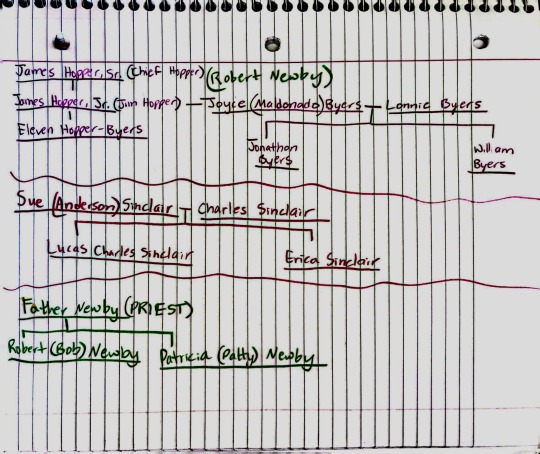


#stranger things#stranger things analysis#stranger things on stage#jopper#bob newby#joyce byers#jim hopper#henry creel#dr brenner#stranger things theory
7 notes
·
View notes
Text
Two River Theater Announces 2022/2023 Season
Two River Theater is proud to announce an exciting theatrical 2022/2023 season, featuring world premiere work.
Two River Theater is proud to announce an exciting theatrical 2022/2023 season, featuring world premiere work as well as plays with some of American theater’s most lauded talents.
Artistic Director John Dias says, “Each of these plays centers on artwork: painting, sculpture, poetry, or music and celebrates the transformative power of art to provoke and stimulate, to make us laugh and rejoice, to…

View On WordPress
0 notes